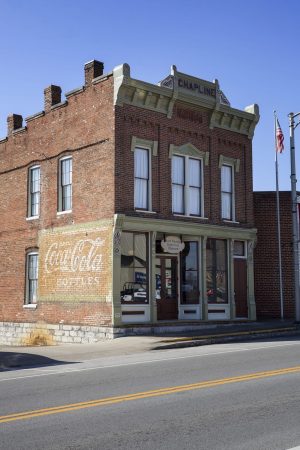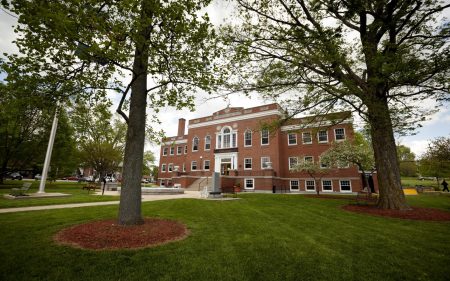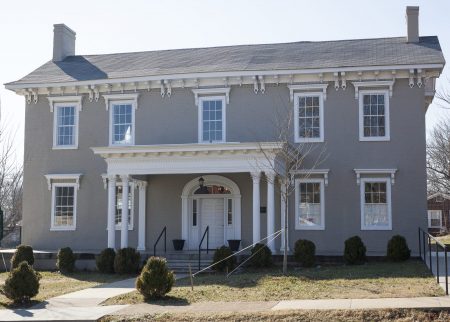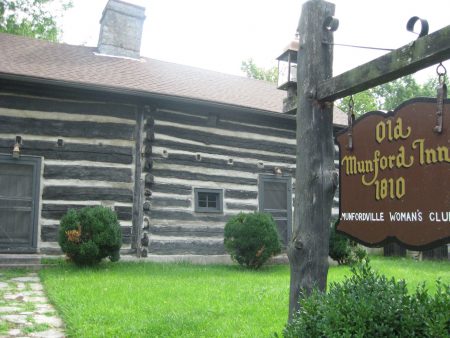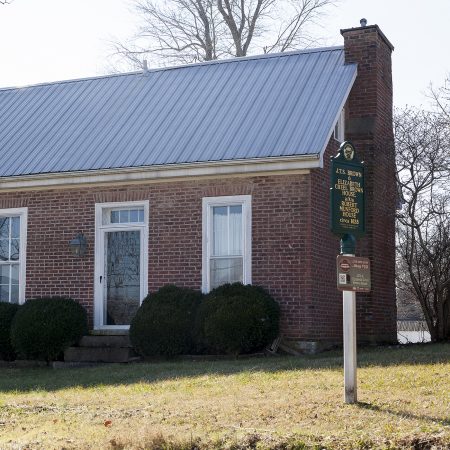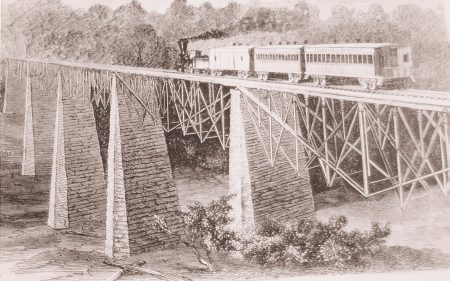Walking Tour Stops
Chapline Building
Our first stop on the Walking Tour is the Chapline Building. Built in 1893, this building has been the home of a bakery, a dry-goods store, a newspaper office, and a telephone exchange. Presently, it serves as the home of the Hart County Historical Museum. Visitors can view the Society’s extensive collection of historic objects, images, books, maps, and papers relating to the history of Hart County.
Since the destruction of the county courthouse by fire in 1928, the Historical Museum has become the main source for information about the early denizens of the county. In addition to the Museum, the Chapline Building is also a repository for genealogical research. The museum is open Monday, Friday 9 a.m. to 4 p.m. and Saturday 8 a.m. to 4 p.m.
George Wood House
Built about 1834, the Wood house is a red brick structure similar to the Barret House. It is built on a slight slope, and the ell is only one story high. The front has been dignified by an impressive two-story gallery, which shelters a fine Federal entrance with elliptical fanlight and sidelights.
George Wood, whose wife was the sister of Kentucky Governor Charles Helm, was active as County Clerk from the time Hart County was formed in 1819.
A member of the Kentucky Military Board during the Civil War, George T. Wood’s son – Thomas J. Wood would attain the rank of Union Major General in the Civil War. As a child, Confederate Brigadier General Simon Bolivar Buckner often spent the week here while he attended the local school (a few stops later on our tour).
During the war, Thomas Wood and his friend Buckner would be pitted against each other at Chickamauga and Chattanooga. Had the Confederates left Munfordville in September 1862, the two would have met in battle on their old playground.
Camp Wood
Residents heard a blast of music from the brass band at brigade headquarters of this Union encampment to ring in the new year of 1862. McCook’s Second Division held as many as 40,000 soldiers at its peak in the camp that formed an arc over the north side of town. Union Camp (Fort) Wood was first established here in late 1861 on the north and west sides of town, with a three-gun battery. After the Confederates briefly occupied the town in 1862, the Federals built Fort Craig on the site of an earlier CSA fort, and a log Stockade, as well as Forts Terrill and Willich, along with Batteries Simons and McConnell (originally named Batteries Hale and Slayton), on the north side of the river. These earthworks on the north side of the Green River are on private property.
Courthouse Fountain
When Simon Bolivar Buckner was a boy, he often had to fetch water from the town spring – 170 feet below the top of the hill where he attended the log school. He resolved that he would one day run that water up the hill to spare the others the same hardship.
The Hart County News, May 1895, reports that Buckner, a civil engineer, was going to personally oversee and pay for a public fountain in the courthouse square.
A member of the Kentucky Military Board during the Civil War, George T. Wood’s son – Thomas J. Wood would attain the rank of Union Major General in the Civil War. As a child, Confederate Brigadier General Simon Bolivar Buckner often spent the week here while he attended the local school (a few stops later on our tour).
During the war, Thomas Wood and his friend Buckner would be pitted against each other at Chickamauga and Chattanooga. Had the Confederates left Munfordville in September 1862, the two would have met in battle on their old playground.
Presbyterian Church Union Hospital
By best estimate, this church was built about 1834 as a joint effort of the local Presbyterian congregation and the Munfordville Masonic Lodge. The first floor was used by the church and the second by the Masons.
During the Civil War, the building was used as a hospital by the Union garrison.
The winter of 1861-1862 was unusually severe and thousands of troops fell victim to rheumatism, pneumonia, measles, mumps, and dysentery. In October of 1863, only one gun shot victim was admitted. The last medical personnel did not leave Munfordville until six months after the end of the war.
Village School / Nurses’ Quarters
Originally two separate brick chambers with a dogtrot passage, this structure supplemented the Presbyterian Church across the street when it was used as a hospital.
After the war, it was used as a school, one room for girls and one for boys. The floors were poured clay. In 1900, the two rooms were joined and converted into a home. The porch was added later.
Thomas Bolin House
Built around 1823 by the brother of the founder of Munfordville, this home probably predated most of the large brick homes in town since there are logs under the present exterior. The interior walls are 16 inches thick.
Francis Asberry Smith House
This beautiful old home was built around 1835, the date impressed on several of the bricks used in construction. F. A. Smith moved to Munfordville in 1830 and started a general store and later a meat processing plant. During the war, Smith a staunch Union man, refused to sell any products to the Confederacy. It is unknown as to why they did not confiscate his goods, unless his friendship with Buckner had some influence. The Smith house was at different times occupied by senior officers of both armies. John Hunt Morgan, the notorious Confederate cavalry leader, occupied the residence briefly in September 1861 while awaiting his original troop of cavalry in the Confederate service.
The Old Munford Inn
The inn is a two-story double log house with a large central chimney between two original wings. Built around 1810, the inn was tended in its early years by Thomas Bolin Munford, brother to the founder of Munfordville. According to legend, it was one of the most famous inns of what was known as “the West” and was especially renowned for its food and the genial, intelligent host’s hospitality.
As a way-station for visitors to Mammoth Cave, the Inn entertained many of the most significant travelers of the 19th century. The building was restored by, and is owned by, the Munfordville Women’s Club.
Richard Jones Munford House
Occupied during the war by Brigadier General R. W. Johnson and the other senior officers, this house reportedly has a tunnel from its basement to an opening on the river bluff.
Johnson was sent to Munfordville to clear the area of Confederates before Buell’s advance south. The house was built around 1830 on a stone foundation having two asymmetrical wings.
Robert Munford House
It is believed that this house was built as a prototype for the Richard Munford House. The structure of the house is similar. This house was built to face the old buffalo trail, which later became known as the Amos’ Ferry Road. Today the road leads to Thelma Stovall Park.
Elijah Creel Cabin
Since the first Hart County Circuit Court was held here in 1819, the Creel Cabin is possibly the oldest structure in Munfordville. Built of poplar logs, it was not bothered by termites. For its day, this house was considered very nice. It has two rooms up and two down, a full basement, and a single chimney.
Pontoon Bridge
Union General McCook was ordered to repair the Green River Railroad Bridge, which had been damaged by Confederates, and set Col. Willich’s 32nd Indiana to the construction of temporary bridges. The bridge was erected at the point of an old ford, where buffalo had once crossed the river shallows.

